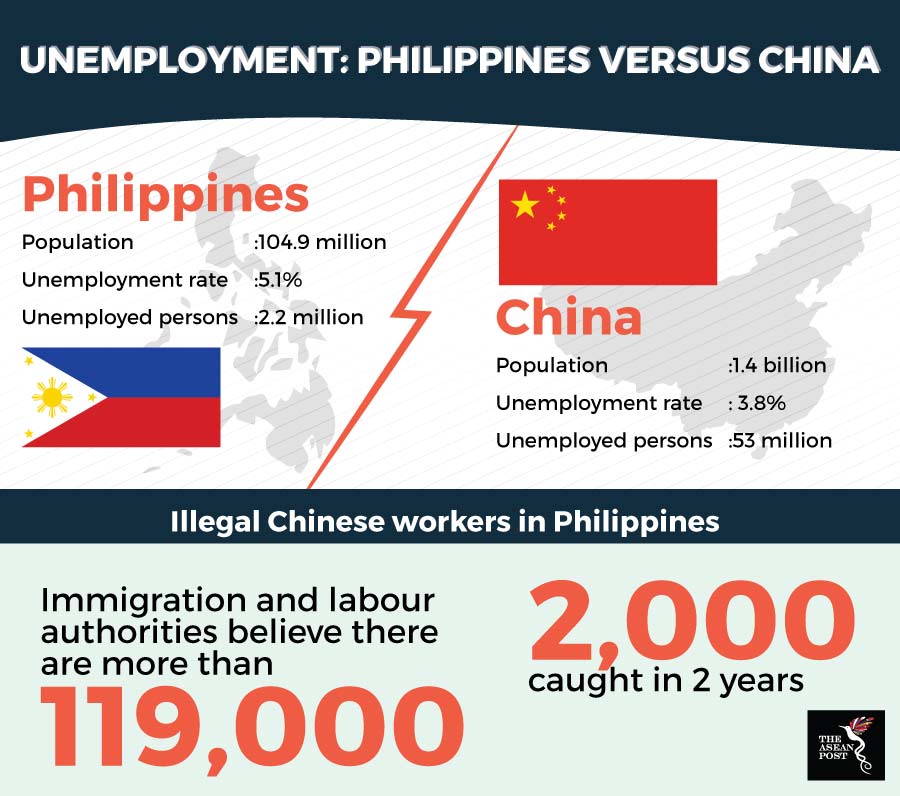Last month, a report quoted Philippines Trade and Industry Secretary Ramon Lopez as saying that the construction of a 305-hectare integrated steel manufacturing plant in Mindanao, is expected to generate 50,000 jobs for Filipino workers.
Set to be completed in six to seven years, the project will be carried out in three phases, and will consist of a port, an integrated steel mill with a capacity of 10 million tons, as well as an industrial park.
Panhua Group, a Chinese steel company, will set up the US$3.5 billion investment at the PHIVIDEC Industrial Estate of the Misamis Oriental-Special Economic Zone in Mindanao. Panhua’s Chairman, Xinghua Li, said that he was optimistic about constructing more industrial parks in the country to increase employment and attract investments into rural areas of the Philippines.
The Philippines has a population of 104.9 million people, and according to Trading Economics, the unemployment rate in the Philippines rose to 5.1 percent in the last quarter of 2018 up from 5.0 percent in the same period a year earlier. The number of unemployed persons went up by 17,000 to 2.2 million while the number of employed dropped by 218,000 to 41.3 million.
In comparison, according to Trading Economics, the unemployment rate in China decreased to 3.82 percent in the third quarter of 2018 from 3.83 percent in the second quarter of 2018. The unemployment rate in China averaged 4.1 percent from 2002 to 2018, reaching an all-time high of 4.3 percent in the fourth quarter of 2003 and a record low of 3.8 percent in the third quarter of 2018.
While 3.8 percent doesn’t seem like much, the fact that China has a population of approximately 1.4 billion people changes things. That’s the equivalent of more than 53 million unemployed people in China.
 Source: Trading Economics
Source: Trading Economics
Illegal Chinese stealing jobs
Recently, on the 28 November, reports surfaced that the Senate labour committee in the Philippines was looking into the proliferation of presumed illegal workers from China. According to the reports, numbers had risen around Metro Manila to a degree that did not match official employment numbers from the Department of Labour and Employment (DOLE).
DOLE figures show that since 2015, close to 116,000 foreigners have been issued an alien employment permit (AEP), which allows them to work legally in the Philippines. An AEP will be issued by DOLE only if there is no Filipino willing or competent enough to do the job being offered to a foreigner.
The permit is one of the major requirements for the issuance of a work visa for aliens, but officials acknowledge that virtually all AEP holders have been able to get work visas.
Chinese nationals account for the bulk of foreign workers holding AEPs, numbering almost 52,000, or about 45 percent of the total. Most of them work in manufacturing, information and communications, and administrative and support services.
The Senate panel learned that the number of Chinese from the mainland entering the Philippines as tourists before obtaining short-term special permits to work in online gambling operations numbered in the tens of thousands. At a hearing of the Senate labour committee, Senator Joel Villanueva expressed alarm and indignation after immigration and labour authorities admitted that more than 119,000 “tourists”, were able to skirt labour regulations to gain temporary employment in the country.
Senator Franklin Drilon, a former labour secretary, put the number even higher and said there could be as many as 400,000 Chinese working for gaming operators and other outsourcing companies that mostly service clients in China.
Illegal Chinese caught
The worry becomes a very real possibility when looking at the sheer number of illegal Chinese that local authorities have successfully nabbed over the years.
According to reports, over the past two years, nearly 2,000 illegal Chinese workers have been apprehended in the Philippines. The biggest haul was in 2016, when 1,200 Chinese employees of a gaming firm inside the Clark special economic zone in Pampanga province were rounded up.
In May last year, nine Chinese and an Indonesian were nabbed for operating dredging vessels and hauling black sand without permits. That same year, in September, 34 Chinese nationals were arrested at an online gaming company in Pasay city, south of Manila.
A Chinese chef was pilloried online in May after he was seen in a video beating up a Filipino waitress at a restaurant. Investigations showed that he did not have a work permit and could not even produce a passport. Recently, in November, 93 Chinese were arrested from another online gambling outfit, in Pasig city, east of Manila.
The numbers are only of those who have been caught but they provide a good glimpse at what could be and whether some senators’ worries are justified.
There is little doubt that a project with the magnitude of a 305-hectare integrated steel manufacturing plant in Mindanao will create jobs. The question that remains is: for whom? Will it truly be local Filipinos who will benefit from a sudden abundance in jobs or will it, in fact, be Chinese from the mainland?
Related articles:
